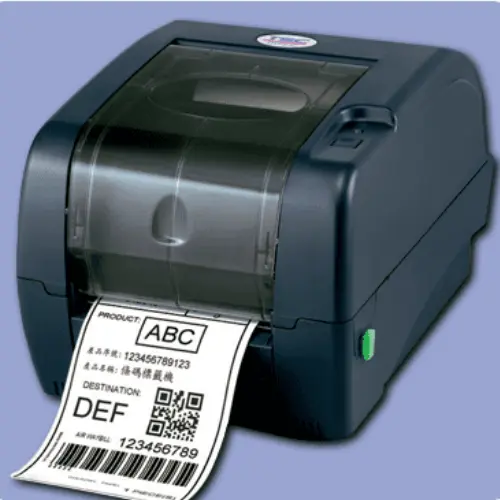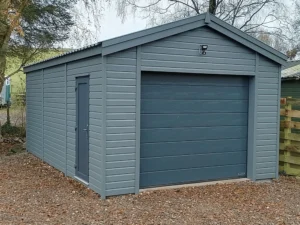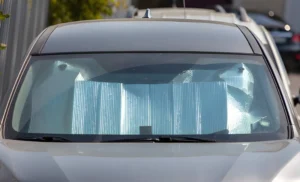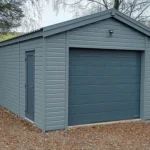A Practical Guide for eCommerce and Small Business Labeling Needs
Thermal labels play a crucial role in the day-to-day operations of small to medium-sized businesses. Whether you’re printing shipping labels, managing inventory, or organizing products in your workspace, the right label size can make all the difference. Selecting the correct thermal label size ensures not only visual clarity but also operational efficiency, preventing errors and saving time.
In this guide, we’ll walk through the eight most commonly used thermal label sizes, explain what each size is best for, and help you identify which ones suit your business needs. If you’re a seller on Amazon, Etsy, or Shopify, or managing your own warehouse or inventory, this article is your go-to reference.
1. 4″ x 6″ – Standard Shipping Label
Common Use Cases: Shipping labels for USPS, FedEx, UPS, and Amazon fulfillment.
Compatible Printers: Rollo, Zebra, Brother QL Series, and other desktop thermal printers.
Why It Matters: The 4×6 label is a universal standard for logistics. Using the wrong size can cause delays in shipping or scanning errors. Its ample space accommodates barcodes, return information, and branding.
2. 2.25″ x 1.25″ – Barcode & Shelf Labeling
Common Use Cases: Barcode labeling for warehouse bins, inventory bins, and retail shelf tags.
Compatible Printers: Zebra GX430t, DYMO 450 series, and other compact thermal printers.
Why It Matters: These labels are small enough for compact labeling tasks but large enough to hold clear barcodes. Proper sizing ensures scanning accuracy and prevents wasted space on shelving.
3. 1″ x 2-1/8″ – Small Product Labels
Common Use Cases: Address labels, return address stickers, or labeling small retail items.
Compatible Printers: DYMO LabelWriter, Brother QL printers.
Why It Matters: Ideal for boutique sellers or home businesses. The compact size helps conserve label material and is easy to affix on small packages or jars.
4. 1.5″ x 1″ – Price Tags and Return Labels
Common Use Cases: Retail pricing labels, short-term return labels, batch numbers.
Compatible Printers: Zebra ZD420, DYMO 450, TSC TTP Series.
Why It Matters: Great for fast application on merchandise. The square layout supports visibility while remaining space-efficient. Useful for high-turnover inventory.
5. 2″ x 3″ – Medium Product Labels & Storage Tags
Common Use Cases: Labeling storage bins, product packaging for handmade goods, eCommerce branding.
Compatible Printers: Rollo, Zebra GX Series, DYMO 5XL.
Why It Matters: A middle-ground size ideal for organizing stockroom items or applying branding labels to outgoing packages.
6. 2.25″ x 4″ – Apparel and Retail Tags
Common Use Cases: Clothing tags, product spec labels, retail packaging.
Compatible Printers: Zebra desktop models, TSC DA Series.
Why It Matters: Gives enough vertical space for item details, SKU codes, and logos. Common in fashion, garment, and retail industries.
7. 0.5″ x 1.5″ – Jewelry & Small Parts Labeling
Common Use Cases: Jewelry price tags, labeling for tiny electronic parts, nail polish, or small tools.
Compatible Printers: Zebra 2824 Plus, Brother QL-800 (with adapter roll).
Why It Matters: Tiny but precise. These labels are often used in high-detail environments where space is at a premium, such as craft shops or repair stations.
8. 3″ x 2″ – Ingredient, Deli & Bin Labels
Common Use Cases: Food rotation labels, ingredient or nutrition tags, small bin labeling in warehouses.
Compatible Printers: Zebra GK420d, DYMO 5XL, Rollo printers.
Why It Matters: Widely used in food and beverage sectors. Ensures legibility for date-sensitive inventory or compliance requirements (e.g., FDA labeling).
How to Choose the Right Thermal Label Size
Selecting the correct label size depends on three key factors:
- Product or Package Size: The smaller the item, the more compact your label should be. Oversized labels may not stick properly or look unprofessional.
- Label Content: Consider what information needs to be printed. Shipping labels require space for addresses and barcodes; pricing labels may only need a number or QR code.
- Printer Compatibility: Always match label size with your printer’s specifications. Some printers (like DYMO) require specific label shapes or proprietary rolls.taba squishy
Start by listing all your labeling needs and checking the dimensions that work across your tasks. It may be worth using 2-3 label sizes in rotation to cover various needs.
Betckey Product Recommendations
Betckey offers high-quality, budget-friendly thermal labels that are compatible with top printers like Rollo, Zebra, and DYMO. Here are three top picks to streamline your labeling:
- 4″ x 6″ Shipping Labels – Ideal for USPS, UPS, FedEx. Compatible with Zebra & Rollo printers.
- 2.25″ x 1.25″ Barcode Labels – Perfect for inventory and shelf labeling. Smooth feed and reliable print quality.
- 1″ x 2-1/8″ Product Labels – Great for small retail packaging or return addresses. Works well with DYMO printers.
Each Betckey label is BPA-free, fade-resistant, and designed for crisp print clarity.
FAQs
Q1: What label size works best for shipping boxes?
A: The 4″ x 6″ label is the standard choice for shipping boxes, as it fits most carrier requirements and includes space for addresses, barcodes, and branding.
Q2: Can I use different label sizes in the same thermal printer?
A: Yes, as long as the printer supports the width and roll size. Be sure to adjust your printer settings or software layout when switching label sizes.
Q3: Do Betckey labels work with my Rollo printer?
A: Absolutely. Betckey provides a wide range of Rollo-compatible labels, including 4×6, 2×3, and other popular sizes used for shipping, barcoding, and retail.
Choosing the right thermal label size is about more than just aesthetics—it impacts your productivity, inventory accuracy, and customer satisfaction. With Betckey’s reliable label selection and commitment to compatibility, your business can operate smoothly and professionally, one label at a time.
Also Read-Selecting the Right Tech Stack for Mobile App Success










